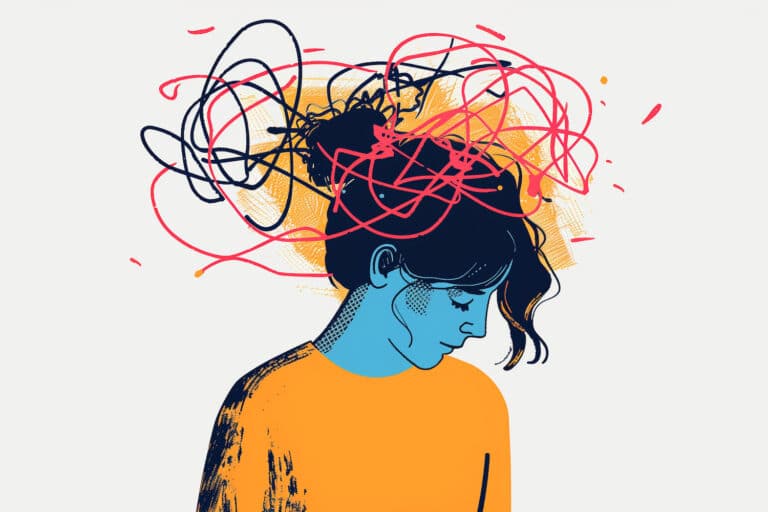In a society where terms like body shaming and weight shaming are all too familiar, one thing remains clear: these behaviors are deeply damaging. Whether labeled as fat shaming, weight bias, weight stigma, bullying, or harassment, the result is the same: making someone feel inferior because of their body size, shape, or appearance.
This destructive behavior not only harms one’s body image but can also lead to severe mental health problems and even eating disorders.
What Do Body Shaming and Body Image Mean?
Body shaming is the expression of negative comments, attitudes, beliefs, or discriminatory actions toward someone because of their weight, body size, shape, or appearance.
This behavior targets both overweight and underweight individuals and affects all genders, ethnicities, and ages, although teenagers are the most common victims (1). One study found that 94% of teenage girls and 64% of teenage boys had experienced some form of body shaming (2).
Body image is more than just the reflection we see in the mirror; it’s about how we perceive and feel about our own bodies. A person’s body image is a combination of their perceptions, thoughts, and emotions about their physical selves, and it’s influenced by several factors, including their personality, life experiences, and the environment they live in. Body shaming has a direct impact on how people see and feel about their bodies.
If you have experienced this type of discrimination in any way, you are at risk of developing a negative body image as a result (3).
Types of Body Shaming
Body shaming occurs in different forms, from outright bullying and harassment to less obvious treatment like social isolation and rejection. Weight discrimination can also be experienced in our physical surroundings; consider how many public spaces, such as airplane and movie theater seating, often cater to smaller bodies (4).
Other types of body shaming include:
- Bullying and harassment: These actions can take the form of verbal criticism, mockery, derogatory comments, or gossip about an individual’s body and appearance.
- Negative self-talk or internalized body shaming: Body discrimination goes beyond public shaming. It can come from within when we talk negatively about our own bodies or have negative thoughts about the way we look. That negative voice often mimics external voices and views we’ve heard from others.
- Social media and cyberbullying: Social media sites like TikTok and Instagram promote unattainable (and often digitally altered) body types. As a result, these platforms can be a breeding ground for cyberbullying and hate speech (5).
Why Do People Body Shame?
A person’s culture heavily influences their perceptions of body weight, shape, and appearance. Individuals who are frequently exposed to diet culture, unrealistic body types, and unattainable beauty standards are more likely to have negative feelings about their own bodies and to feel pressure to be thin.
Western cultures and media tend to portray a very narrow idea of beauty and health and to disparage body types and features that fall outside that ideal. In this landscape, larger bodies mean poor health, a lack of self-control, or laziness, and are seen as inferior to smaller bodies. Whether through television, film, magazines, or social media, the cultural messages we’re exposed to about body size affect how we perceive and treat people with larger bodies—even when we don’t realize it.
Oftentimes, body shaming is not intended to be hurtful but to be playful or to promote health; this is often the case among family members or parents who comment on or joke about each other’s bodies or weight. It’s important to remember, however, that these comments are just as harmful as intentionally mean-spirited body shaming.
Children are especially vulnerable to negative comments about weight from their parents or loved ones. In adolescents with higher weights, 40% of girls and 37% of boys report being teased by their family members (6). Even when these comments are well-intentioned, they can be extremely hurtful. Research shows that weight-related comments and diet talk by parents are associated with and can trigger eating disorders.
Studies on patients recovering from eating disorders have found that adolescents whose parents discussed weight with them were more prone to dieting, using unhealthy weight-control behaviors, and binge eating (6).
The Psychological Effects of Body Shaming
Body shaming in any form can cause short-term and long-term psychological harm.
The most severe effects of body shaming include:
- Higher levels of body dissatisfaction and negative body image
- Psychological distress, including humiliation, shame, low self-esteem, self-loathing, and loneliness
- A higher risk for mental health issues, including anxiety, depression, and suicidal thoughts
- Engaging in disordered eating or the development of an eating disorder, such as anorexia, bulimia, or binge eating disorder
- Facing discrimination in healthcare, employment, and education
- Avoiding seeking medical care and treatment (5)
Overcoming Body Shaming
Everyone deserves to feel valued and accepted, regardless of their physical appearance. So, how do you combat body negativity, protect your own mental health, and do the same for those around you? The following measures can help:
- Evaluate your own beliefs and attitudes about weight and body size. Avoid judging others based on their size, shape, or appearance.
- Be aware of how you talk to yourself. Replace negative self-talk with positive self-talk. Our inner voices impact our well-being more than we realize.
- Practice self-compassion by acknowledging and appreciating your inner strengths and qualities rather than focusing on appearance.
- Challenge negative comments, whether they are about you or another person. Educate the people around you on how body shaming behaviors are harmful.
- Use body-friendly vocabulary and avoid words that could cause someone to feel badly or self-conscious about their body (5).
- Follow body-positive influencers and limit your time on social media. Always remain cautious of comments or skip them altogether to avoid hate speech. Be in control of what you choose to view.
It may be necessary to seek professional help if you are experiencing body or weight shaming and find yourself resorting to disordered eating behaviors as a result. Our team of highly trained professionals at Magnolia Creek can help you or your loved one navigate eating disorder treatment and recovery with the utmost compassion and support.
Contact a member of our team at 205-678-4373 to find out how we can help you or the person you care about.
References
- Cerolini, S., Vacca, M., Zegretti, A., Zagaria, A., & Lombardo, C. (2024). Body shaming and internalized weight bias as potential precursors of eating disorders in adolescents. Frontiers in Psychology, 15. https://www.frontiersin.org/journals/psychology/articles/10.3389/fpsyg.2024.1356647/full
- WCNC Charlotte. (2017, May 2). Study: 94% of teenage girls have been body shamed. https://www.wcnc.com/article/features/producers-picks/study-94-of-teenage-girls-have-been-body-shamed/275-436143277
- National Eating Disorders Collaboration. (n.d.). Body image. Retrieved March 20, 2024, from https://nedc.com.au/eating-disorders/eating-disorders-explained/body-image/
- Sonneville, K. R., Thurston, I. B., Gordon, A. R., Richmond, T. K., Weeks, H. M., & Lipson, S. K. (2024). Weight stigma associated with mental health concerns among college students. American Journal of Preventive Medicine, 66(2), 260-268. https://www.sciencedirect.com/science/article/abs/pii/S0749379723003835
- National Eating Disorders Collaboration. (n.d.). Weight stigma. Retrieved March 20, 2024, from https://nedc.com.au/eating-disorders/eating-disorders-explained/weight-stigma
- Golden, N. H., Schneider, M., & Wood, C. (2016). Preventing obesity and eating disorders in adolescents. Pediatrics, 138(3), e20161649 . https://publications.aap.org/pediatrics/article/138/3/e20161649/52684/Preventing-Obesity-and-Eating-Disorders-in?autologincheck=redirected




